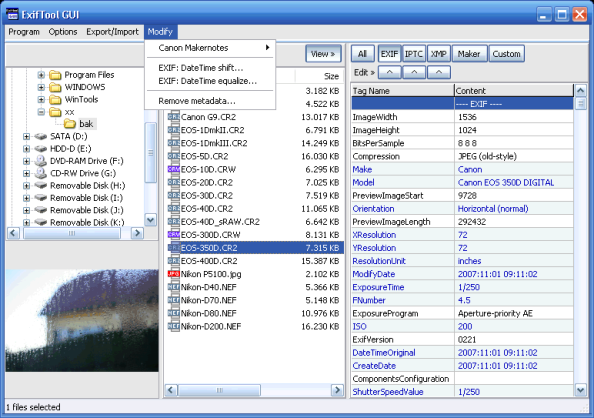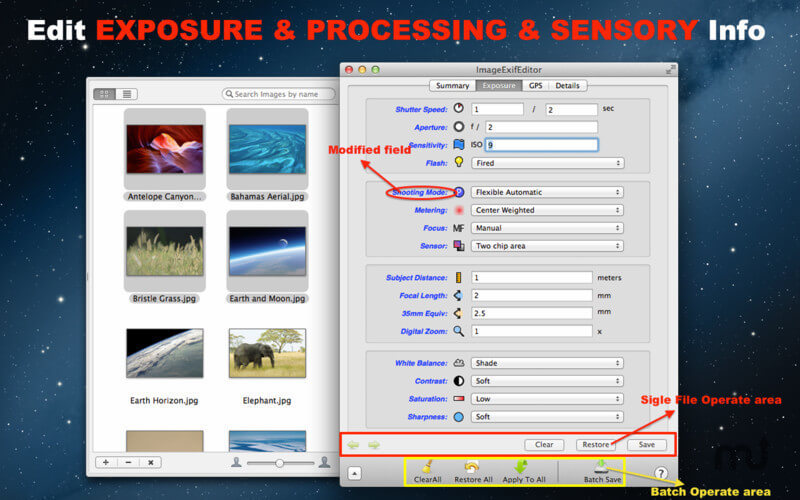
- EXIFTOOL SHOW ALL TAGS INSTALL
- EXIFTOOL SHOW ALL TAGS MANUAL
- EXIFTOOL SHOW ALL TAGS FULL
- EXIFTOOL SHOW ALL TAGS PLUS
EXIFTOOL SHOW ALL TAGS MANUAL
To learn what it’s capable of, once installed on your system, make sure to read the manual exiftool -help NOTE: ExifTool is a powerful and complex tool. Windows: download ExifTool for Windows from the official website ( linked above )
EXIFTOOL SHOW ALL TAGS INSTALL
MacOS: you can install it via Homebrew with brew install exiftool Arch, Manjaro sudo pacman -S perl-image-exiftool.Fedora, RedHat, CentOS sudo dnf install perl-image-exiftool.noarch.Debian, Ubuntu, Mint, Kali sudo apt install libimage-exiftool-perl.
EXIFTOOL SHOW ALL TAGS PLUS
There are a lot of web apps and browser addons that you can use to strip out metadata from photos.īut today, we’re going to focus on ExifTool – a cross-platform Perl library plus a command-line application for reading, writing, and editing meta information in various files ( various image formats, audio formats, video formats, document formats, etc.).
EXIFTOOL SHOW ALL TAGS FULL
The data fields are often written by the device used to take the photo but can also be populated by programs such as Photoshop.Ĭheck out the full list of data fields supported by Exif. Exif Data in PhotosĮxchangeable image file format, or Exif data, is information that accompanies an image file and contains many data fields that can be populated or left blank. They collect it and add it next to your likes, comments, your network of ‘friends’ etc., to profile you. While social media platforms like Facebook or Instagram ( same company – Facebook ) strip out the metadata before it shows your photo to the world, they don’t just erase that metadata. Make sure the service you use strips out metadata. Luckily, most social media platforms eliminate this threat by stripping out metadata from your published files. That’s metadata.īesides what’s visible in the photo itself, metadata can reveal when and where the photo was taken, the device used to take the photo and other unique characteristics that can fingerprint you across the web.īy not removing metadata, a hacker or OSINT researcher can easily find out where you live, where you work, your preferences and habits, etc., just by extracting the Exif data hidden inside the photos you post online. And both file types have one thing in common that can give away a lot more information than you might think. The two most common file types shared online today are photos and videos.


FileCreateDate : 2019:05:26 06:29:06-04:00Īs you can see, some files have only very basic tags, whereas others have more like and and tags.ALSO READ The Easiest Way to Remove EXIF MetadataĪLSO READ Metadata Cleaner: View and Clean Metadata ( Linux )

The output should look like this: = C:/Users/Brubs/Downloads/test/moo - face.jpg Where you can replace "C:\Users\Brubs\Downloads\test" with the direct absolute path to the file or folder. To list out what types of metadata the file has, I use this: exiftool -time:all -a -G0:1 -s C:\Users\Brubs\Downloads\test


 0 kommentar(er)
0 kommentar(er)
